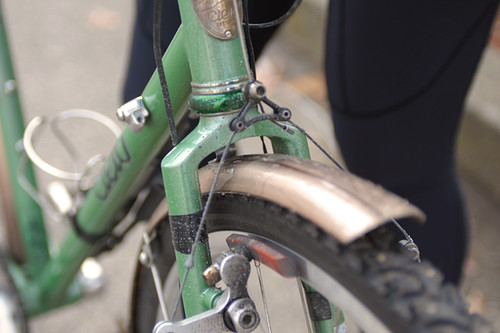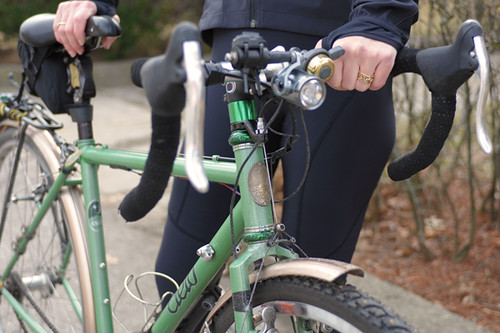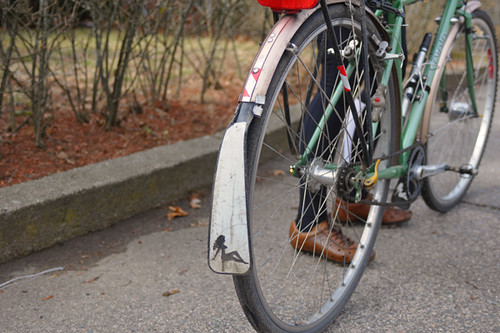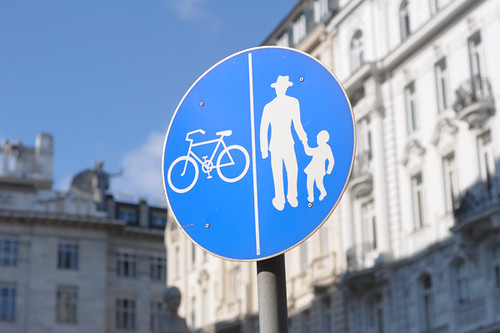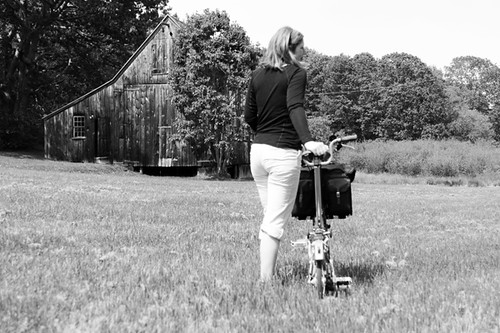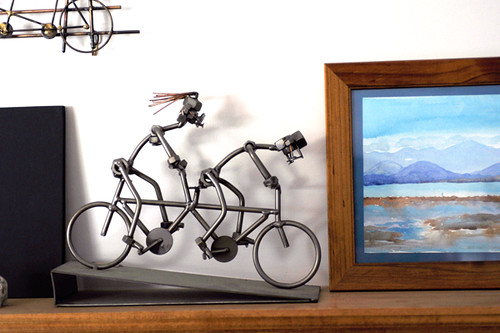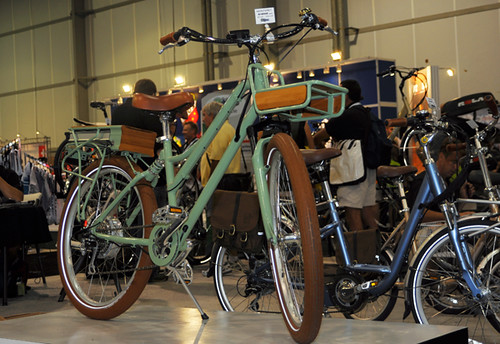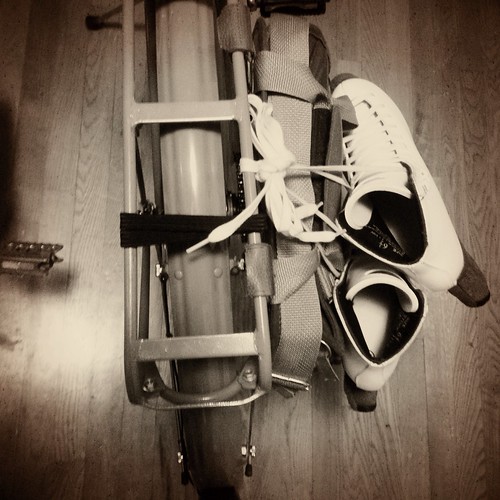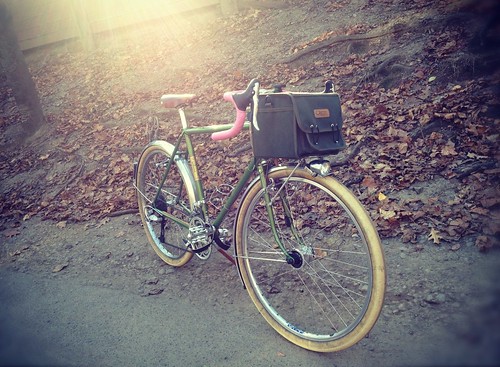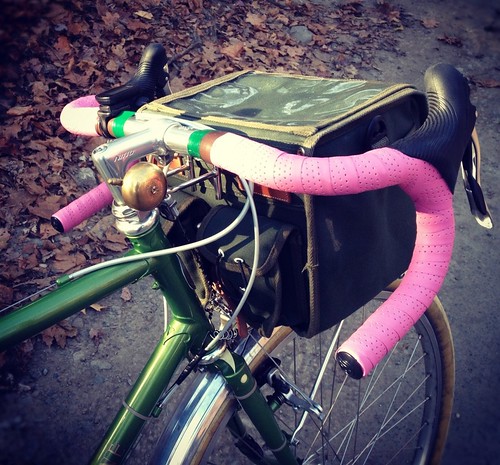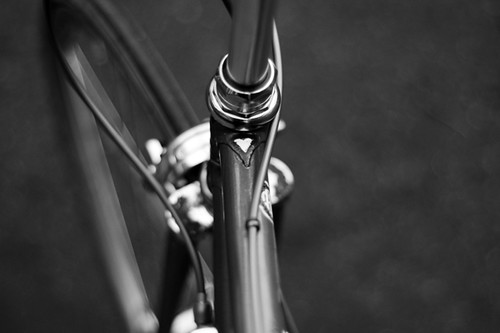At the moment there is an engaging dialogue going on about the cost of bicycles, which I believe many readers here will find informative: Last week Jan Heine of the
Bicycle Quarterly published a post entitled
Why Buy an Expensive Bicycle, in which he argues in favour of custom-built bicycles costing 5 times as much as mid-tier production bikes. In response, Kent Peterson of
Kent's Bike Blog explained
why he prefers inexpensive bicycles, presenting an almost diametrically opposite viewpoint. Together, I think these two posts and the reader comments that follow make for some truly thought-provoking reading, and I invite you to check them out.
Having read both posts, I find that my own opinion on this matter does not fit into the dichotomy of the debate. But I will try to explain it in my own way, without framing it as an "expensive vs inexpensive" issue.
Put simply, for me it is about the bicycle and, more importantly, about the cyclist's experience - not about the price. Bicycles are made for riding, and in order to ride them (and be inspired to ride more) the cyclist's experience must be positive. Not everyone is mechanically inclined and able to fix even minor issues when things start to go wrong. Not everyone's body can withstand poor (or even mediocre) ride quality. Finally, not everyone is inspired by a bicycle that is so crudely made and generic-looking as to be utterly without character. Now, we can criticise people for their lack of mechanical skills, their sensitivity to discomfort and their preoccupation with aesthetics. Or we can accept these traits and turn our attention to the bicycle itself - defining a "good" bicycle as one that will inspire people to ride. And by "people" I mean people as they are, with all their flaws and biased preferences and love of pretty things and mechanical ineptitudes.
Based on the huge amount of feedback I receive from readers who are either would-be cyclists or fledgling cyclists, I believe there are three characteristics a bicycle must have in order to attract those who are not already committed to cycling: (1) it has to work properly without a lot of fussing, (2) it has to feel comfy, and (3) it has to look nice. And it makes sense that a person of average financial means who desires to ride a bicycle, will naturally strive for the least expensive option that satisfies all three of these criteria.
And therein lies the first glitch. Based, again, on the feedback I get from readers, it is quite challenging to find a bicycle nowadays that both satisfies all three of the criteria listed above, and costs what most first-time buyers consider to be a reasonable amount. When I quote the $500 figure as a first-time buyer's typical budget, I am by no means making fun of this figure or disparaging persons with such a budget. On the contrary, this was my budget as well when I first began shopping around for a transportation bike. Unfortunately, $500 or thereabouts is considered "low end" by the bicycle industry today. Sad as it is, if you walk into a bicycle store right now, $500 will afford you only the lowest quality bikes available. The salesperson may even tell you, holding back a laugh, that with such a budget shopping for a new bike will be difficult. It is what they told me in 2009.
Now let's get back to this fictional person who, on the one hand, wants a nice bike, but on the other hand is discovering how tough it is to find a bicycle that satisfies their requirements on a modest budget. At this stage they have a choice between two main options: (a) compromise on one or more of their criteria, or (b) increase their budget. Many choose the former option, which, granted, seems very reasonable. However, I kid you not that I now receive perhaps half a dozen emails a week from persons who are unhappy with their bikes and are not enjoying cycling as a result of a budget-driven compromise. The biggest complaint is that of frequent failures. The cyclist is not experienced enough to deal with them, and moreover does not want to deal with them. They also do not have time to constantly take the bike to the shop. The second biggest complaint is that of severe discomfort and poor ride quality. With all these problems, the bicycle does not get ridden very often and the cyclist begins to lose faith in cycling all together.
So you see, it is not the price I have a problem with. It is this outcome. By no means do I believe expensive bicycles to be better simply by virtue of costing more; that would be absurd. When a $500 bicycle becomes available that I believe to be reasonably well made, comfortable and attractive enough to make new cyclists happy, I gladly
herald it here and
post lots of sexy pictures. Unfortunately, I find few bicycles in this price range to be of good quality, and I refuse, absolutely refuse to promote manufacturers who churn out overpriced bike-shaped toys by giving them exposure here based on their "low" prices alone. If a person cannot afford a well-made new bike, I recommend
buying used or vintage.
Now that I've finished that rant, the next question might be: So what
is my idea of a high-quality new bike and what would it cost? Unfortunately, I have no definitive answers for you. Unlike Jan Heine, I do not believe that a $5,000+ custom bicycle is necessarily the solution. Customers are not always experienced and informed enough to truly know what they want, and builders make mistakes all the time. Also, the custom process takes forever and by far not everyone is willing to wait a year or more for a bike. Moreover, I agree with Kent that beyond a certain price point the anxiety over potential theft and damage may diminish a bicycle's utility.
The truth is that what constitutes a quality bicycle and a good value often depends on the person. It depends on their needs. It depends on their standards. It depends on the kind of riding they do, on their body's sensitivity, on their terrain, even on their climate. It depends on their level of mechanical skill. It is impossible to profess "the answer" that will be applicable to everyone.
In conclusion, my view is that it's not about pricing; we are way too focused on pricing. If you are serious about cycling, determine the criteria you are looking for first: What kind of bicycle makes you want to ride? Because that is what ultimately it is all about. Then find a way to buy that kind of bicycle, without compromising on those criteria. For some this may be doable at $500, for others it could be $5000, and most of us will fall somewhere in between. It does not matter to me how much a bicycle costs, as long as the owner loves it and wants to ride it all the time.
